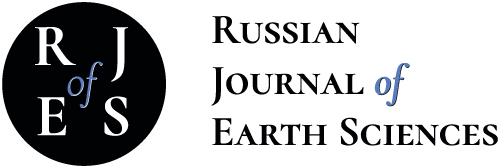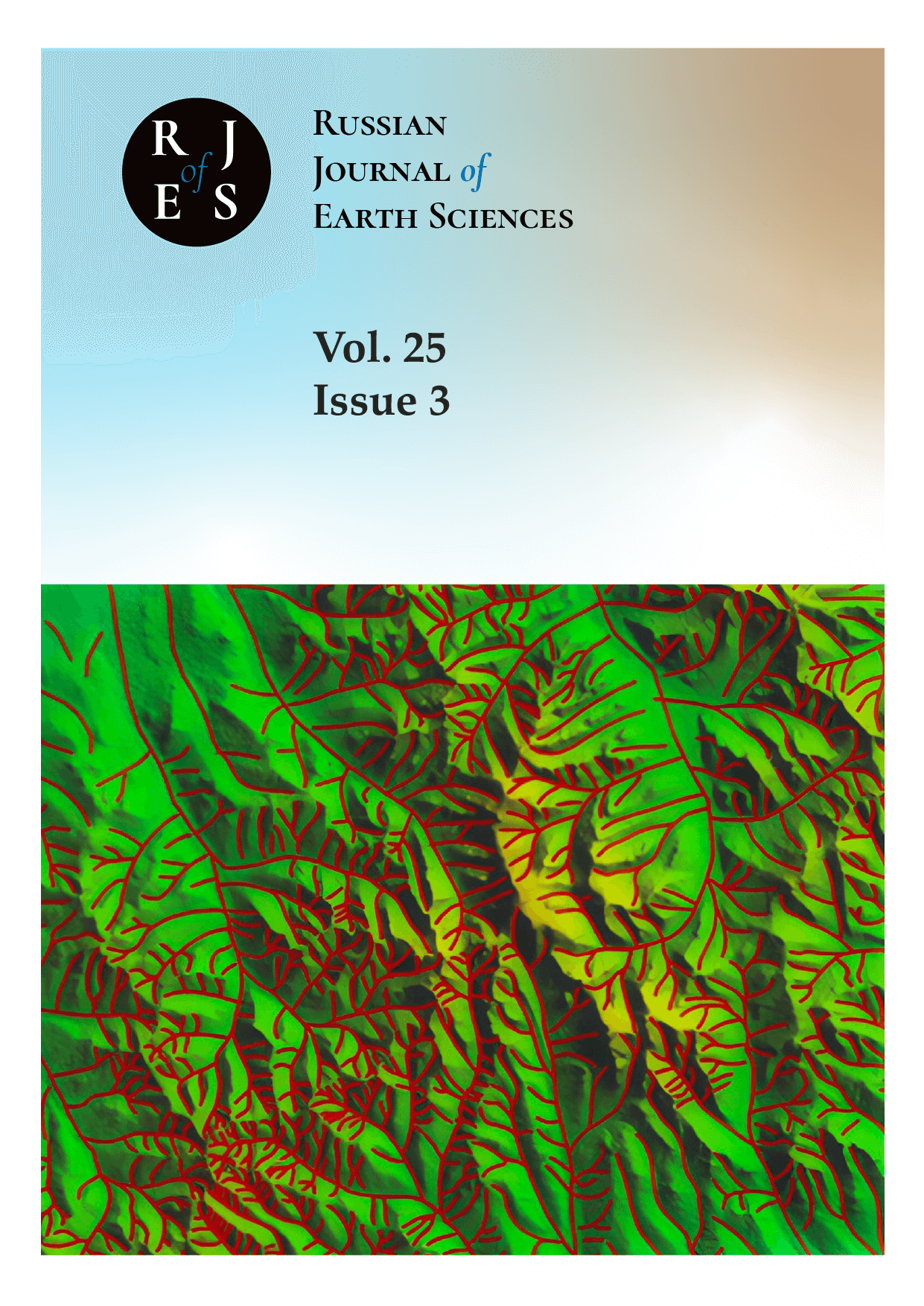Россия
с 01.01.2008 по настоящее время
г. Москва и Московская область, Россия
УДК 632.126 Землетрясения
УДК 55 Геология. Геологические и геофизические науки
УДК 550.34 Сейсмология
УДК 550.383 Главное магнитное поле Земли
ГРНТИ 37.31 Физика Земли
ГРНТИ 37.01 Общие вопросы геофизики
ГРНТИ 37.15 Геомагнетизм и высокие слои атмосферы
ГРНТИ 37.25 Океанология
ГРНТИ 38.01 Общие вопросы геологии
ГРНТИ 36.00 ГЕОДЕЗИЯ. КАРТОГРАФИЯ
ГРНТИ 37.00 ГЕОФИЗИКА
ГРНТИ 38.00 ГЕОЛОГИЯ
ГРНТИ 39.00 ГЕОГРАФИЯ
ГРНТИ 52.00 ГОРНОЕ ДЕЛО
ОКСО 05.06.01 Науки о Земле
ББК 26 Науки о Земле
ТБК 63 Науки о Земле. Экология
BISAC SCI SCIENCE
Систематический прогноз землетрясений производится регулярно с постоянным интервалом в заранее выбранной сейсмически однородной зоне. Результатом каждой итерации прогноза является карта зоны тревоги, в которой ожидаются эпицентры целевых землетрясений. В рассматриваемой технологии реализованы следующие новые положения: 1 – Решение считается успешным, если на интервале прогноза все эпицентры целевых землетрясений попали в зону тревоги. 2 – Технология оптимизирует вероятность успешного обнаружения эпицентров землетрясений в серии прогнозов и вероятность успешного прогноза на очередной итерации. 3 – Технология позволяет оценить вероятность успешного решения на очередном интервале прогноза. Рассмотрены примеры применения метода для прогноза землетрясений Камчатки, Калифорнии и островной части Японии.
систематический прогноз землетрясений, машинное обучение, метод минимальной области тревоги, временные ряды GPS
1. Завьялов А. Д. Среднесрочный прогноз землетрясений: основы, методика, реализация. — Москва : Наука, 2006. — EDN: https://elibrary.ru/QKFPZD.
2. Молчан Г. М. Оптимальные стратегии в прогнозе землетрясений. Современные методы интерпретации сейсмологических данных // Вычислительная сейсмология. — 1991. — Т. 24. — С. 3—18.
3. Соболев Г. А. Основы прогноза землетрясений. — Москва : МАИК «Наука/Интерпериодика», 1993. — 313 с. — EDN: https://elibrary.ru/TGSIGH.
4. Соболев Г. А., Пономарев A. В. Физика землетрясений и предвестники. — Москва : МАИК «Наука/Интерпериодика», 2003. — 270 с. — EDN: https://elibrary.ru/RVEBFL.
5. Чебров В. Н., Дрознин Д. В., Кугаенко Ю. А. и др. Система детальных сейсмологических наблюдений на Камчатке в 2011 г. // Вулканология и сейсмология. — 2013. — № 1. — С. 18—40. — DOI:https://doi.org/10.7868/s0203030613010021.
6. Чеброва А. Ю., Чемарёв A. С., Матвеенко E. А. и др. Единая информационная система сейсмологических данных в Камчатском филиале ФИЦ ЕГС РАН: Принципы организации, основные элементы, ключевые функции // Геофизические исследования. — 2020. — Т. 21, № 3. — С. 66—91. — DOI:https://doi.org/10.21455/gr2020.3-5.
7. Amei A., Fu W., Ho C. H. Time series analysis for predicting the occurrences of large scale earthquakes // International Journal of Applied Science and Technology. — 2012. — Vol. 2, no. 7.
8. Asim K. M., Idris A., Iqbal T., et al. Earthquake prediction model using support vector regressor and hybrid neural networks // PLOS ONE. — 2018. — Vol. 13, no. 7. — DOI:https://doi.org/10.1371/journal.pone.0199004.
9. Barnhart W. D., Hayes G. P., Wald D. J. Global Earthquake Response with Imaging Geodesy: Recent Examples from the USGS NEIC // Remote Sensing. — 2019. — Vol. 11, no. 11. — P. 1357. — DOI:https://doi.org/10.3390/rs11111357.
10. Blewitt G., Hammond W. C., Kreemer C. Harnessing the GPS Data Explosion for Interdisciplinary Science // Eos. — 2018. — Vol. 99. — P. 485. — DOI:https://doi.org/10.1029/2018eo104623.
11. Bradley A. P. The use of the area under the ROC curve in the evaluation of machine learning algorithms // Pattern Recognition. — 1997. — Vol. 30, no. 7. — P. 1145–1159. — DOI:https://doi.org/10.1016/s0031-3203(96)00142-2.
12. Corbi F., Sandri L., Bedford J., et al. Machine Learning Can Predict the Timing and Size of Analog Earthquakes // Geophysical Research Letters. — 2019. — Vol. 46, no. 3. — P. 1303–1311. — DOI:https://doi.org/10.1029/2018gl081251.
13. Gitis V., Derendyaev A. The Method of the Minimum Area of Alarm for Earthquake Magnitude Prediction // Frontiers in Earth Science. — 2020. — Vol. 11. — DOI:https://doi.org/10.3389/feart.2020.585317.
14. Gitis V., Derendyaev A. A Technology for Seismogenic Process Monitoring and Systematic Earthquake Forecasting // Remote Sensing. — 2023. — Vol. 15, no. 8. — P. 2171. — DOI:https://doi.org/10.3390/rs15082171.
15. Gitis V., Derendyaev A., Petrov K. Analyzing the Performance of GPS Data for Earthquake Prediction // Remote Sensing. — 2021. — Vol. 13, no. 9. — P. 1842. — DOI:https://doi.org/10.3390/rs13091842.
16. Gitis V. G., Derendyaev A. B., Pirogov S. A., et al. Adaptive estimation of seismic parameter fields from earthquake catalogs // Journal of Communications Technology and Electronics. — 2015. — Vol. 60, no. 12. — P. 1459–1465. — DOI:https://doi.org/10.1134/s1064226915120098.
17. Gitis V. G., Derendyaev A. B., Pirogov S. A., et al. Earthquake prediction using the fields estimated by an adaptive algorithm // Proceedings of the 7th International Conference on Web Intelligence, Mining and Semantics. — 2017. — P. 1–8. — DOI:https://doi.org/10.1145/3102254.3102269.
18. Kagan Y. Y. Earthquakes: Models, Statistics, Testable Forecasts. — Wiley, 2013. — DOI:https://doi.org/10.1002/9781118637913.
19. Kail R., Burnaev E., Zaytsev A. Recurrent Convolutional Neural Networks Help to Predict Location of Earthquakes // IEEE Geoscience and Remote Sensing Letters. — 2022. — Vol. 19. — P. 1–5. — DOI:https://doi.org/10.1109/lgrs.2021.3107998.
20. Kaplan S. M., McFall R. W. The Statistical Properties of Noise Applied to Radar Range Performance // Proceedings of the IRE. — 1951. — Vol. 39, no. 1. — P. 56–60. — DOI:https://doi.org/10.1109/jrproc.1951.230422.
21. King C. Y. Gas geochemistry applied to earthquake prediction: An overview // Journal of Geophysical Research: Solid Earth. — 1986. — Vol. 91, B12. — P. 12269–12281. — DOI:https://doi.org/10.1029/jb091ib12p12269.
22. Kossobokov V., Shebalin P. Earthquake Prediction // Nonlinear Dynamics of the Lithosphere and Earthquake Prediction. — Berlin : Springer Berlin Heidelberg, 2003. — P. 141–207. — DOI:https://doi.org/10.1007/978-3-662-05298-3_4.
23. Lighthill J. A Critical Review of VAN: Earthquake Prediction from Seismic Electrical Signals. — Singapore : World Scientific, 1996. — DOI:https://doi.org/10.1142/3006.
24. Mignan A., Broccardo M. Neural Network Applications in Earthquake Prediction (1994-2019): Meta-Analytic and Statistical Insights on Their Limitations // Seismological Research Letters. — 2020. — Vol. 91, no. 4. — P. 2330– 2342. — DOI:https://doi.org/10.1785/0220200021.
25. Molchan G. Space-Time Earthquake Prediction: The Error Diagrams // Pure and Applied Geophysics. — 2010. — Vol. 167, no. 8/9. — P. 907–917. — DOI:https://doi.org/10.1007/s00024-010-0087-z.
26. Obara K., Kasahara K., Hori S., et al. A densely distributed high-sensitivity seismograph network in Japan: Hi-net by National Research Institute for Earth Science and Disaster Prevention // Review of Scientific Instruments. — 2005. — Vol. 76, no. 2. — DOI:https://doi.org/10.1063/1.1854197.
27. Okada Y., Kasahara K., Hori S., et al. Recent progress of seismic observation networks in Japan -Hi-net, F-net, K-NET and KiK-net- // Earth, Planets and Space. — 2014. — Vol. 56, no. 8. — P. 15–28. — DOI:https://doi.org/10.1186/BF03353076.
28. Panakkat A., Adeli H. Neural network models for earthquake magnitude prediction using multiple seismicity indicators // International Journal of Neural Systems. — 2007. — Vol. 17, no. 01. — P. 13–33. — DOI:https://doi.org/10.1142/s0129065707000890.
29. Rhoades D. A. Mixture Models for Improved Earthquake Forecasting with Short-to-Medium Time Horizons // Bulletin of the Seismological Society of America. — 2013. — Vol. 103, no. 4. — P. 2203–2215. — DOI:https://doi.org/10.1785/0120120233.
30. Shebalin P. N., Narteau C., Zechar J. D., et al. Combining earthquake forecasts using differential probability gains // Earth, Planets and Space. — 2014. — Vol. 66, no. 1. — P. 1–14. — DOI:https://doi.org/10.1186/1880-5981-66-37.
31. Soloviev A. A., Gvishiani A. D., Gorshkov A. I., et al. Recognition of earthquake-prone areas: Methodology and analysis of the results // Izvestiya, Physics of the Solid Earth. — 2014. — Vol. 50, no. 2. — P. 151–168. — DOI:https://doi.org/10.1134/s1069351314020116.


















